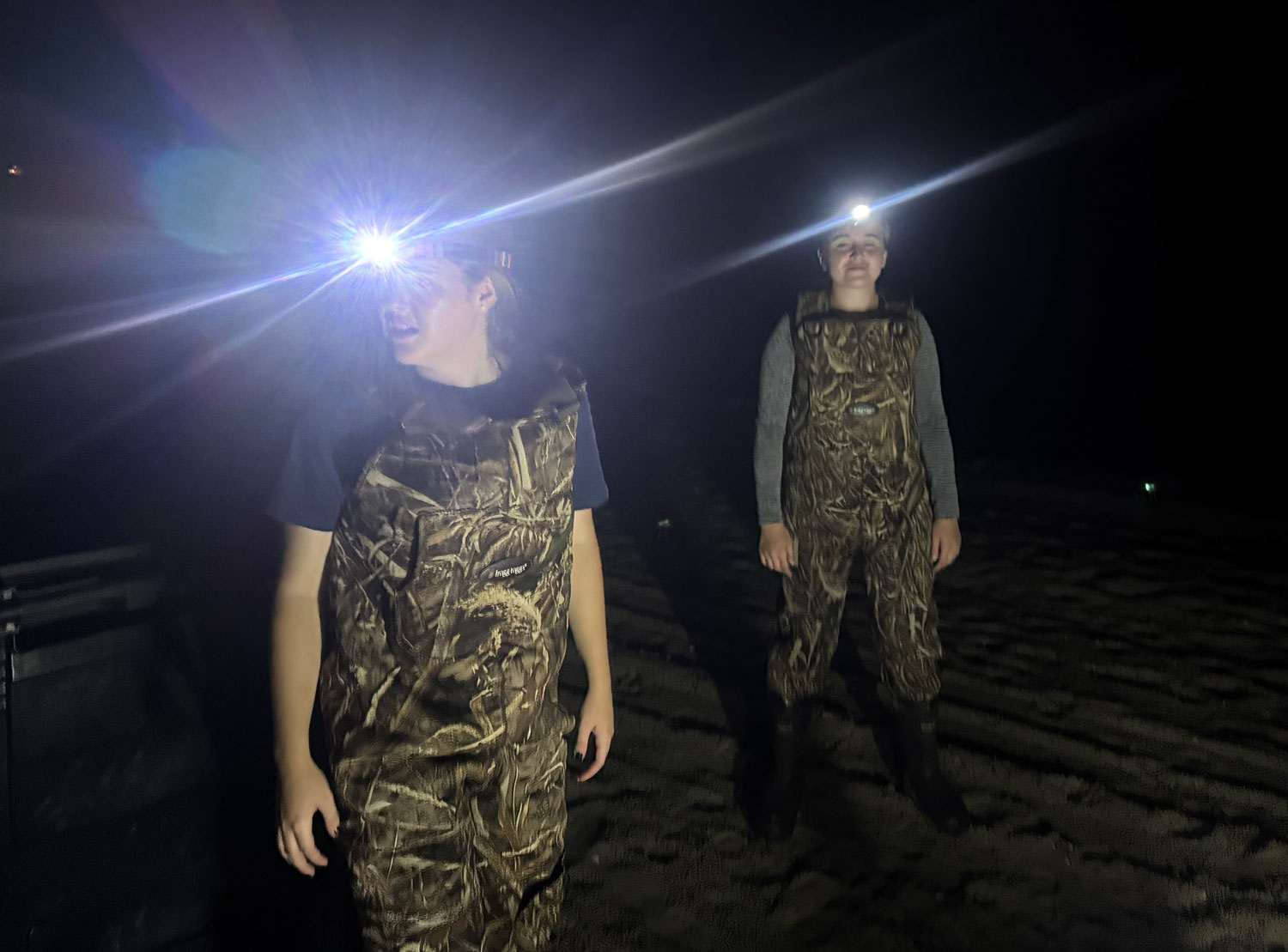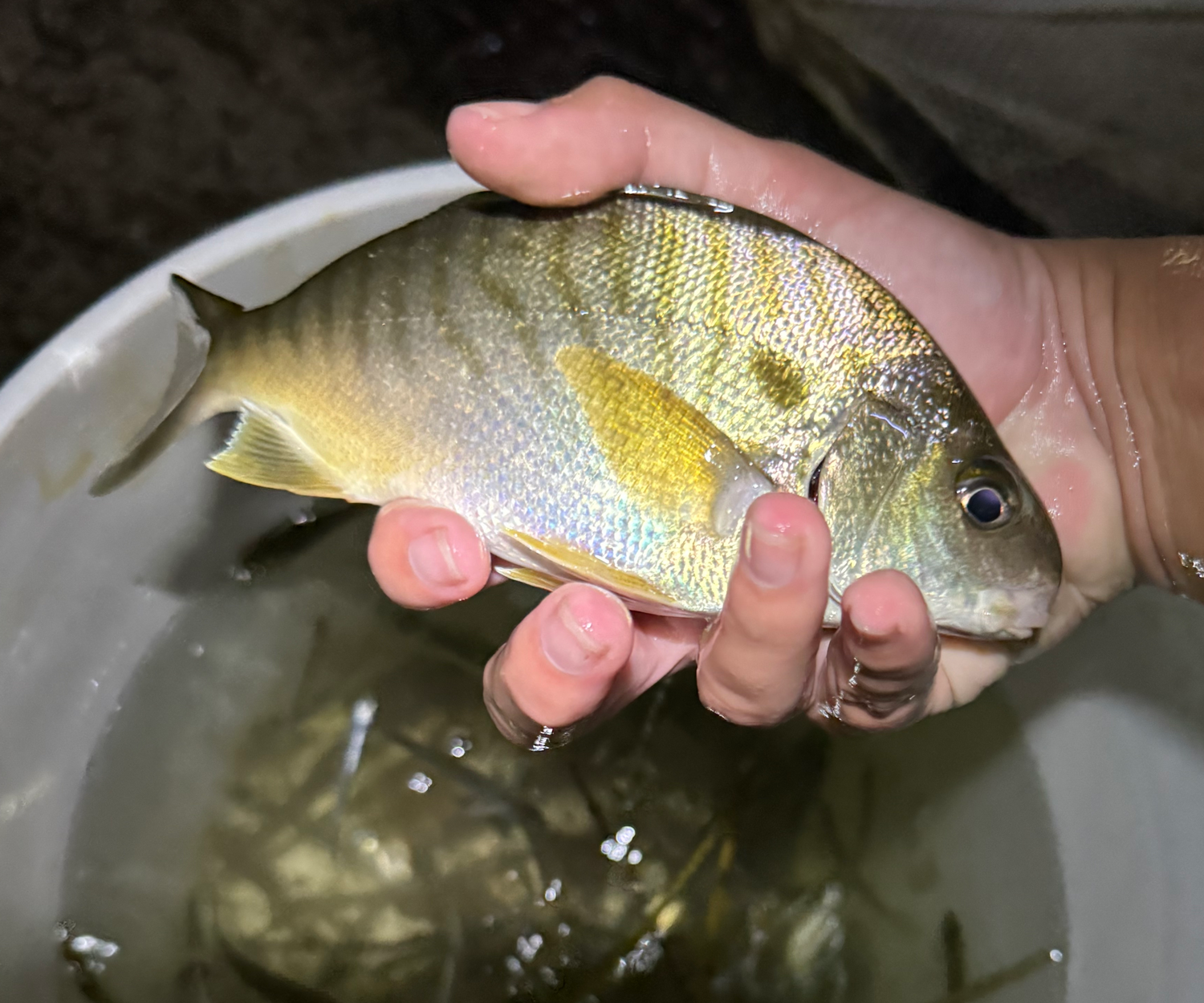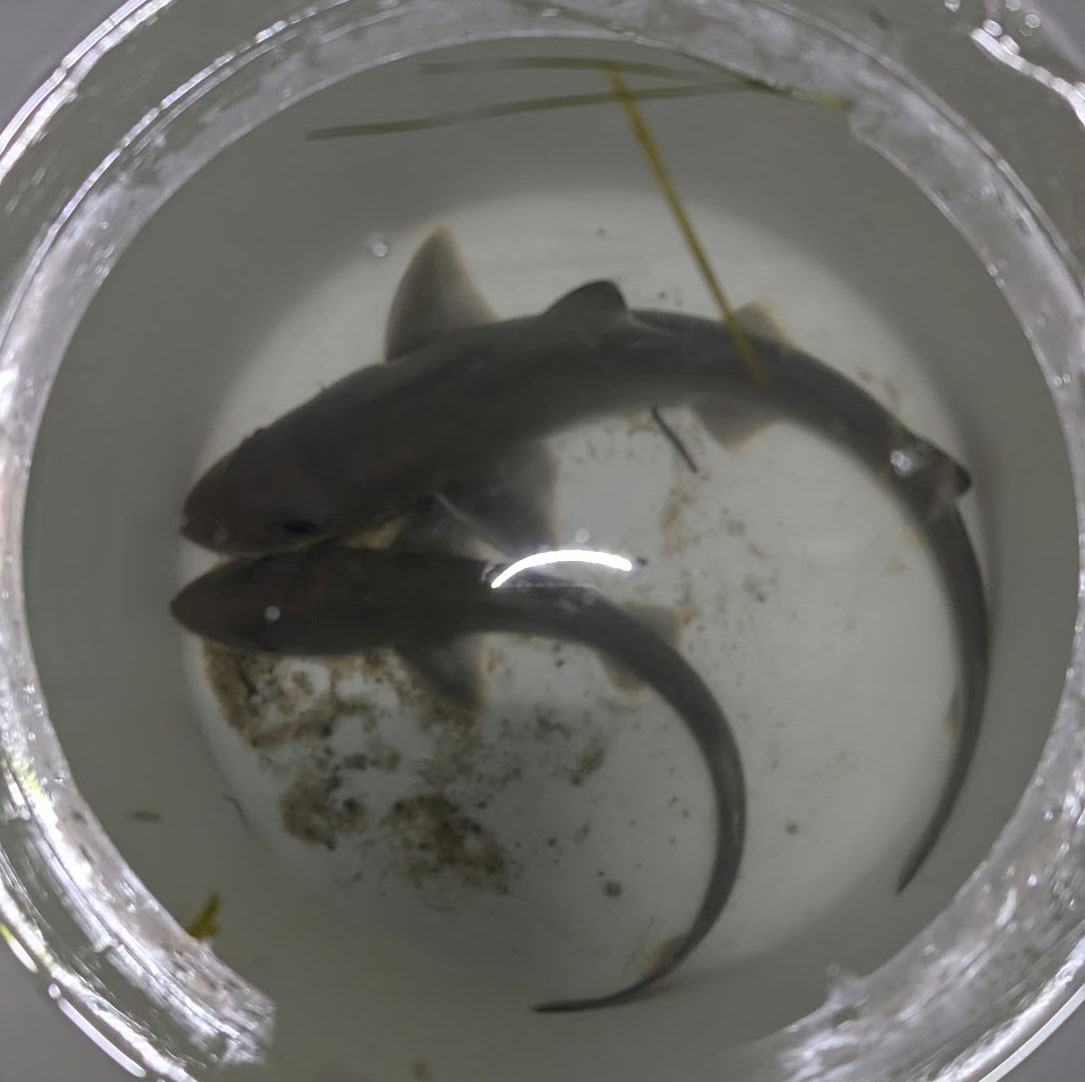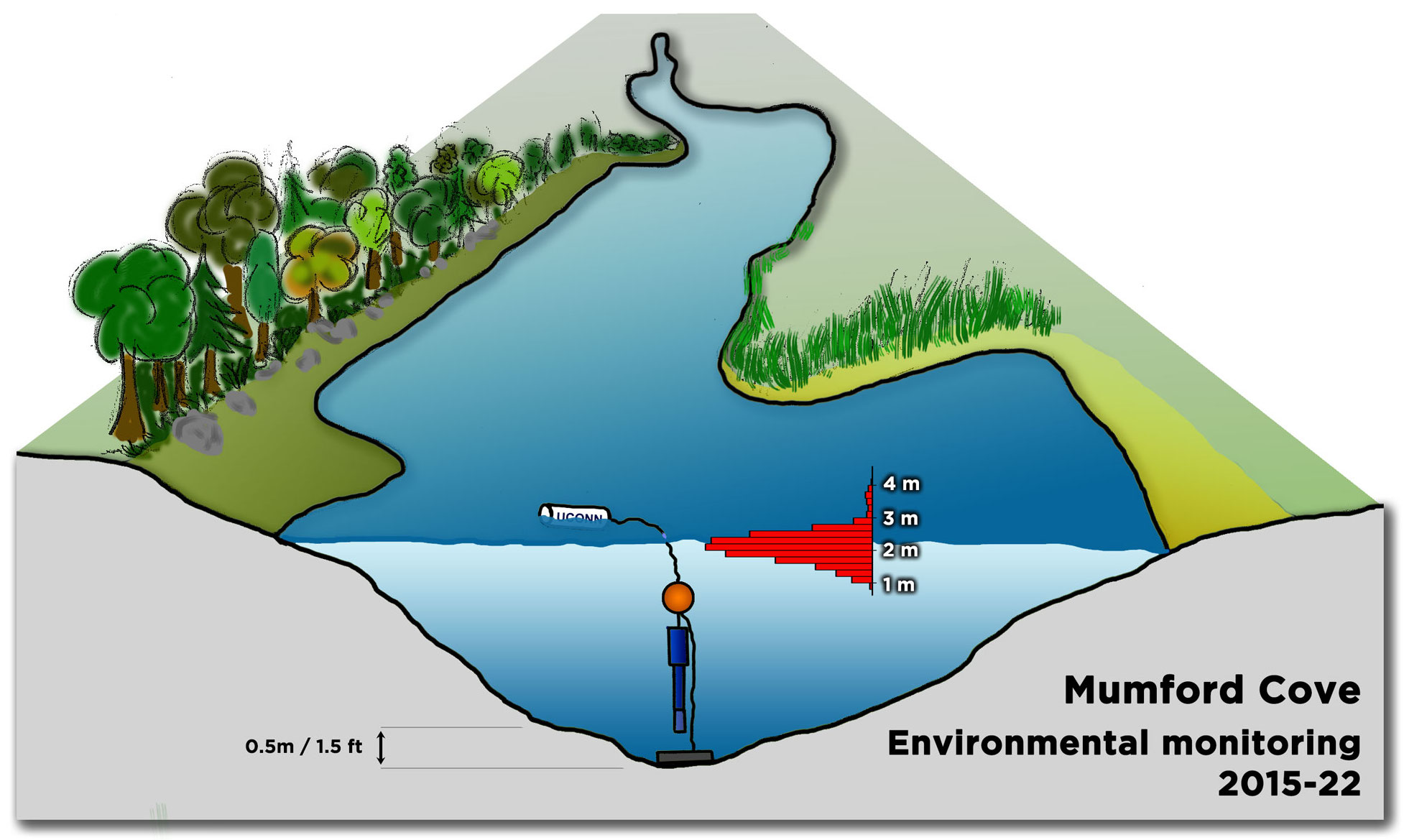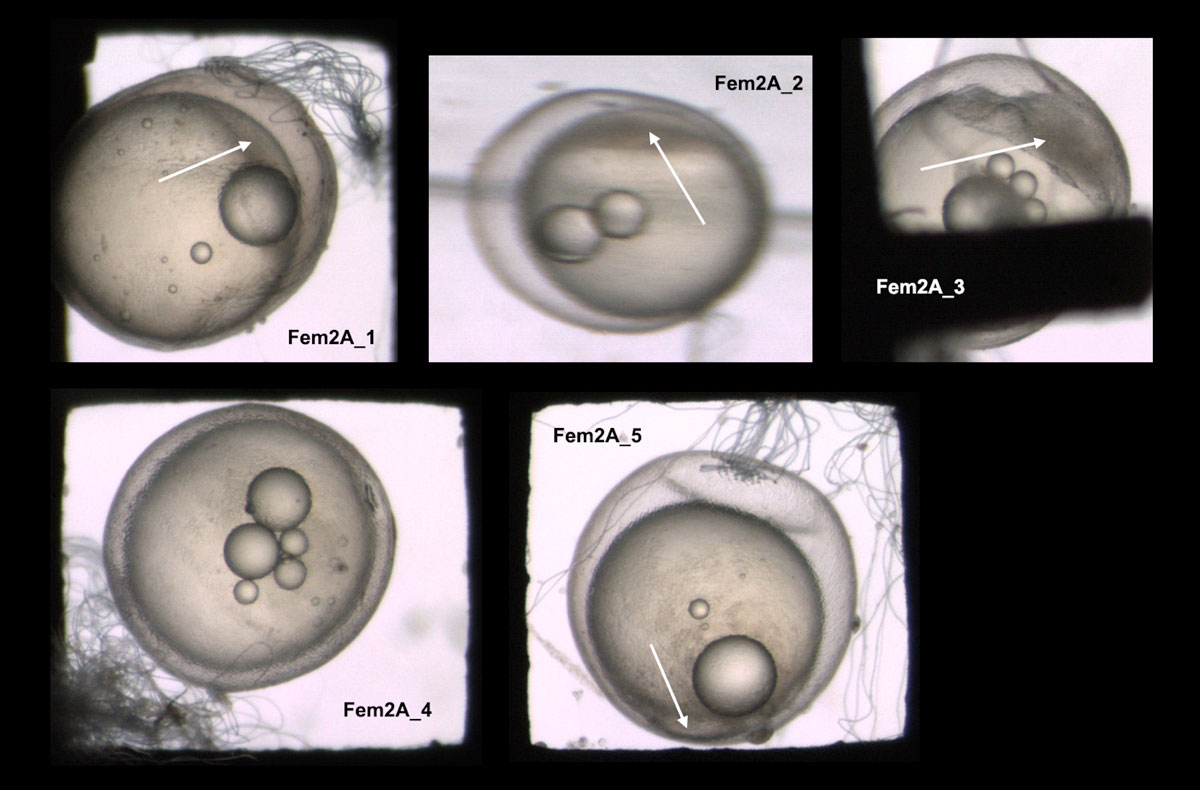Mumford Cove
Feeling the pulse of Mumford Cove
[Collaboration] Nina and Aryn visit from Cornell University
On 19-20 July, our lab temporarily transformed into a genetics laboratory, as Nina Therkildsen and her post-doc Aryn Pierce Wilder visited us from Cornell University (Therkildsen Lab). Their lab also shares the fascination for the Atlantic silverside as a model organism and has set out to eventually assemble the fully annotated genome of this species.
During their visit, they could accompany us for our bi-weekly beach seining in Mumford Cove, where we collected juveniles born this year as well as the last few spawning ripe adults at the end of the season. It was a great summer morning and fun for everyone.
In the lab, Nina and Aryn went on dissecting different types of tissue (muscle, liver, spleen, gills, fins) from a few specimens destined for genetic analyses. In the Rankin lab, we tried a novel procedure on this species, i.e., making haploid embryos by fertilizing strip-spawned eggs with sperm that was UV-radiated before.
Thank you for visiting, Nina and Aryn, and we will see you back in fall, when Nina will give a Friday seminar on 11 November 2016. We’re looking forward to what she will have to report!

